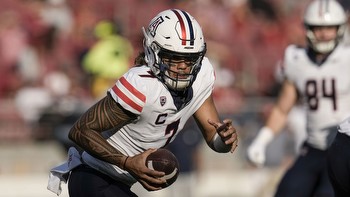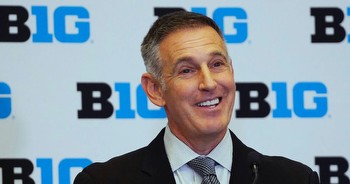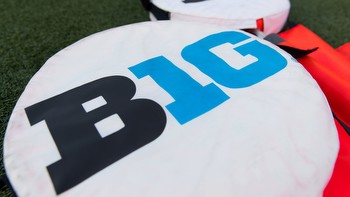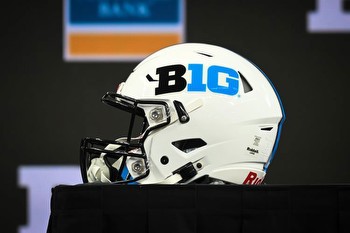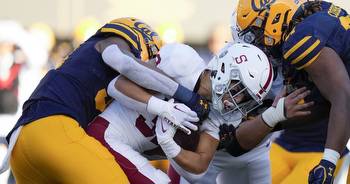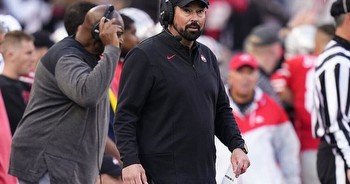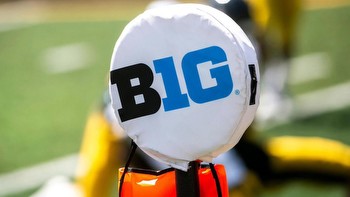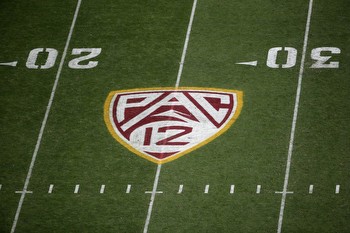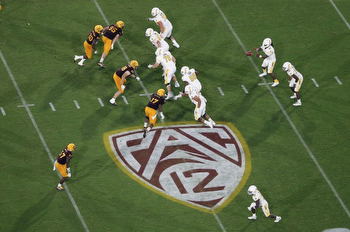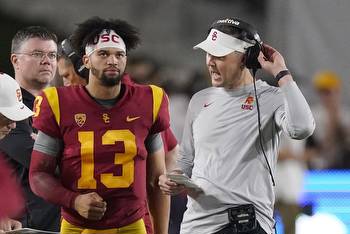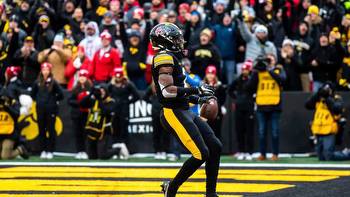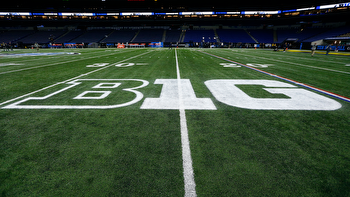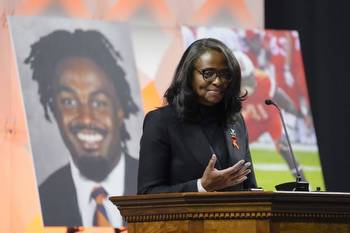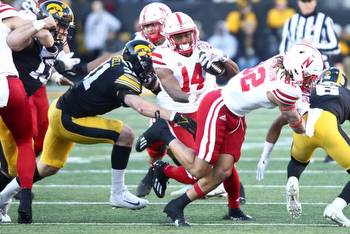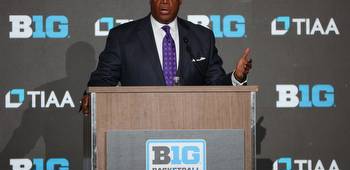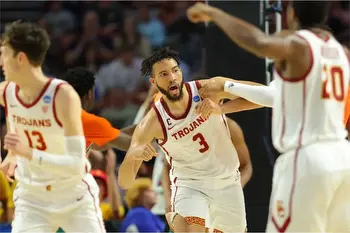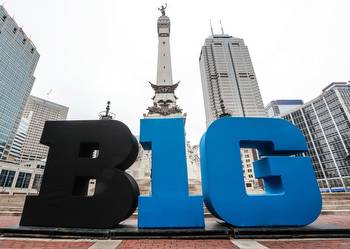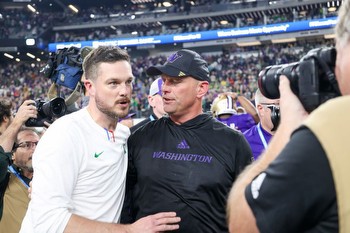UCLA’s Big Ten Conference move is just a year away
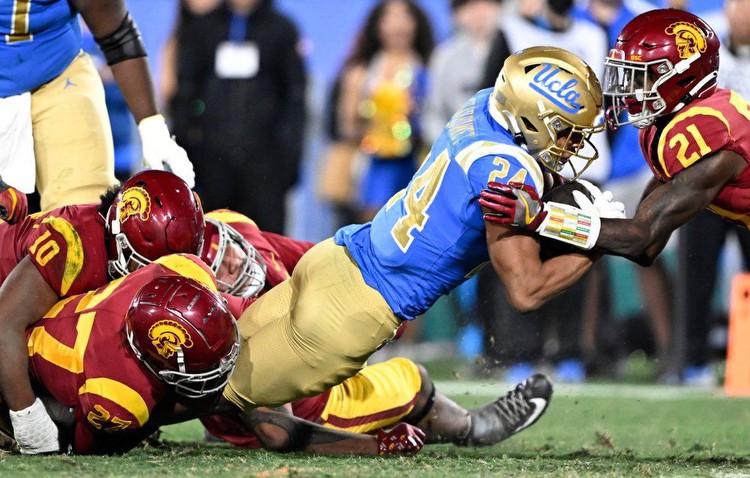
The UCLA athletic department is officially one year away from joining the Big Ten Conference, but there are still logistics to solve as their respective fall sports programs prepare for their final season in the Pac-12 Conference.
“There are a lot of moving parts when you switch conferences,” UCLA athletic director Martin Jarmond said. “You start talking about traveling schedules, opponents and just everything. The good thing is that we have a year to prepare and have been since June 30th of last year.”
Big Ten representatives have also been involved in UCLA and USC’s preparations, having made multiple trips to both campuses to help establish a foundation for what lies ahead over the next year.
“I had the pleasure of spending time in Los Angeles in mid-June with leadership from USC and UCLA,” Big Ten commissioner Tony Petitti said at the conference’s media day. “Student-athlete welfare, scheduling and marketing were the primary focus for both institutions at our meetings.”
Jarmond traveled in February to visit with officials at the Big Ten’s headquarters in Rosemont, Illinois. UCLA football coach Chip Kelly confirms he’s also had meetings with conference officials regarding a “general overview of stuff.”
“We’ve undergone a strategic and thorough planning process to really dive deep into our competition and how we stack up and compare and learn so we can amplify our strengths and look at how we can invest in our programs and student-athletes, so that when we get to the Big Ten we are competing at a high level from Day 1,” Jarmond said.
How the teams will travel across the country to compete in conference play remains a work in progress as the administration considers a feasible solution.
UCLA is expected to travel at least 5,510 miles roundtrip to complete the upcoming football season but will see an increase to 13,479 miles traveled round trip to complete the 2024-25 schedule, with trips to Big Ten opponents Indiana, Iowa, Michigan and Rutgers in New Jersey.
Regardless of the additional flyer miles, UCLA and USC will bolster what is considered one of the conferences best positioned for future success. It also adds the Pacific time zone, which is important from a media rights perspective, to a league that already features universities in the Eastern and Central time zones.
“This move was made to benefit all of our 750 student-athletes,” Jarmond said. “This is going to put them in a better position when it comes to resources, brand exposure and being competitive across the board. It wasn’t done for this sport or that sport, it was done for our entire athletic program and where we want to go.”
Whether the conference will expand further remains unclear but the Big Ten’s decision to announce its upcoming football schedule for the next two seasons (2024-25 and 2025-26) in early June could indicate that any other movement wouldn’t take effect until after those two years were completed.
The schedule provided some understanding of what will be in store for the Los Angeles-based football programs.
“Our football schedule format was an important step towards integrating USC and UCLA,” Petitti said.
The Big Ten decided to preserve its important rivalries, while at the same time, creating a nine-game conference format “that maintains the conference’s strength of schedule” and guarantees that every member will play at least one home and away game against every other member over each four-year period.
USC and UCLA are considered one of those important rivalries and will continue to build the series’ history that dates to 1929.
“We get to add another rivalry to the Big Ten,” said François McGillicuddy, the Big Ten Network’s president. “We are fortunate enough to have great distribution in Los Angeles already and we are excited to bring them to Big Ten fans nationally and to bring the network to be an even great part of Los Angeles and its fan bases more broadly.”
UCLA will have Nebraska and Rutgers as its “two-play opponents,” meaning the Bruins will have both the Cornhuskers and the Scarlet Knights on the schedule for 2024 and 2025. USC will play Penn State and Wisconsin.
Petitti tabbed Diana Sabau and Becky Penny to work on men’s and women’s basketball and postseason formats for each of the conference’s Olympic sports.
“I’m confident you will see creative solutions that address travel concerns, connect all of our members and student-athletes into a unified conference, and promote competitive balance,” Petitti said.
The conference schedule will not leave much room for UCLA and USC to keep some of their rivalries intact, especially for football. USC will likely continue its nonconference series with Notre Dame, but the annual tradition of the Bruins and Trojans playing teams like Cal and Stanford may be in jeopardy.
There’s a chance USC and UCLA could reach agreements to continue their series with the in-state rivals and others through nonconference play. The Bruins don’t have an opening on their nonconference futures schedule until 2028. The Trojans have games scheduled through 2026.
UCLA’s football team has played Cal every year since 1933 and Stanford every year since 1946.
“We want to make sure we embrace it and enjoy it,” Jarmond said. “We have some great opponents in the Pac-12 and we will cherish those opportunities to compete with them this year.”







